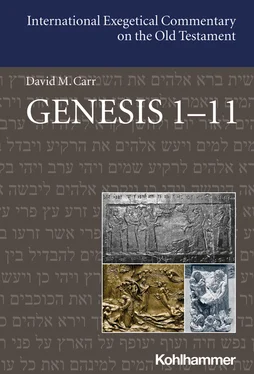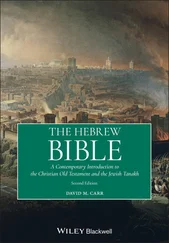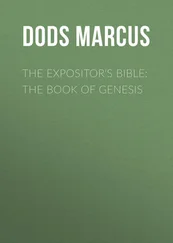These creation elements (divine word, correspondence formula, and creation act/event) are followed in almost every case in Gen 1 with a statement that God “saw that it was good,” 51an element that lends a semi-doxological, hymnic tone to the overall stately creation report. 52Each day concludes with the statement “it was evening, it was morning” and a number labeling for the day (e.g., “one day” 1:5b). 53The presence of this generally steady sequence across 1:3–31, without real narrative tension or resolution, justifies the application of the generic term “creation report” to Gen 1, rather than creation “story” or “narrative.” 54It represents a stately, sometimes semi-poetic narrative counterpart to hymns that praise God’s creation, such as Psalm 104 discussed above. 55
Together, these initial four elements in the creation descriptions of Gen 1 show God as supremely powerful through God’s speaking and having God’s wishes precisely fulfilled. The strong correspondence between God’s wishes and their fulfillment are underlined not only by consistent pairing of divine speech and act of fulfillment, but also by the frequent inclusion of the correspondence formula “and it was so” (ויהי כן; varied to ויהי אור in the first instance) in the creation acts and similarly frequent concluding note that God approved of the fulfillment (“and God saw that it was good” וירא אלהים כי טוב). Together these elements, occurring in some form across virtually all eight creation acts, stress in different ways God’s absolute domination of the cosmos. This will be relevant as we later look at God’s creation of humanity “as God’s image” for godlike rule over the creation’s living creatures.
Finally, this particular focus on the depiction of God as powerful ruler in Gen 1 resembles a similar use of cosmogonic traditions in the Enuma Elish epic to demonstrate Marduk’s supreme power. Nevertheless, despite this broader similarity to the Enuma Elish and some more specific similarities (and contrasts) to be discussed below, there is one massive difference between Gen 1 and that early Mesopotamian Epic (alongside numerous smaller differences). Whereas the Enuma Elish epic demonstrates Marduk’s supreme power over the gods through his vanquishing of the goddess Tiamat, Gen 1 does not contain the slightest hint of any other deity or power that might oppose God.
The Septuagint (= LXX) and Other Textual Editions of Gen 1
The textual editions for Gen 1:1–2:3 diverge on how regularly they reproduce the pattern described above. In particular, the LXX quite precisely follows this pattern while most other ancient witnesses (e.g., MT, SP, Qumran manuscripts) feature minor divergences. These include the following: the first specific occurrence of the correspondence formula (“and it was so”; 1:7b) occurs after (rather than between) God’s initial order about the heavenly plate (1:6) and God’s making of that plate (1:7a); there is no statement of divine approval directly after God’s creation of the divider (1:8); and there is no correspondence formula at all in the description of God’s creation of the sea/air creatures (1:20–21). In each of these cases, the LXX provides a Greek rendering that more strictly follows the overall pattern of the chapter. Though one could argue that the LXX is original and the divergent versions the result of secondary errors, 56most studies of this set of problems have opted to see the Septuagint as representing a generally harmonizing tradition here, much as it represents a harmonizing tradition in numerous other parts of the Genesis primeval history. 57It appears that the original, non-harmonized version of Gen 1:1–2:3, though highly regular overall in its emphasis on God’s supreme control of the process, is irregular in details. In this respect the chapter, like other texts in the Priestly tradition, manifests a interplay between regular structure and variation. 58
That said, there are some cases where the LXX may witness to an earlier text in Gen 1. For example, the function of the correspondence formula in the non-LXX traditions for day two (formula after divine act in 1:7, versus after divine word in 1:6 LXX) is unclear, since this would be the only instance of the formula that does not immediately follow the quoting of a divine word (e.g., 2 Kgs 7:20a; cf. 7:19 and 15:12b; cf. 15:12a) or human request for a divine sign (Judg 6:38, cf. 6:37). If the MT and other traditions represent the earlier reading in this case, it is difficult to know what was intended by the placement of the formula in 1:7.
More significant for actual interpretation is the probability that the LXX reading including the waters gathering themselves into their gathering places in 1:9 is earlier than its MT and SP counterparts. In this case, the loss of this plus in other manuscript traditions can be explained by a more substantial error of homoioarkton skipping from the [וו]ויק (“and they gathered”) retroverted at the outset of the LXX plus to the [רא]ויק that is reflected in all textual witnesses at the outset of 1:10. 59In addition, this case of divergence in the LXX is unlike others in that in the missing element is not just a formulaic element—correspondence formula or statement of divine approval—accentuating the complete execution of God’s orders, but an entire report of that execution, indeed one that diverges from God’s orders in featuring a plural for the gatherings of waters (τὰς συναγωγάς αὐτῶν < מקוהם) that contrasts with the stress in God’s order on waters gathering in “one place” (מקום אחד; 1:9aα). That said, some have argued that the LXX is harmonizing in the case of this plus as well. 60
Gen 1:3–5. The creation of lightThis first creation act, like the others that follow in Gen 1, is initiated by a divine speech. With the exception of 1:26, these initial speeches by God (1:3a, 6, 9a, 11a, 14–15a, 20, 24a), are not addressed to anyone, but instead express God’s internal intention, highlighting how all of the creation of humans and their biome corresponded precisely to God’s plan. The speech in Gen 1:3a is distinguished by its unusual brevity, contrasting with the descriptions of created objects by its lack of a statement about the purpose of the created element (cf. 1:6, 9a, 14–15). 61Moreover, this divine speech is alone in featuring the same verb “to be” that occurs in the execution formula.
These divergences in Gen 1:3a, are but the first examples of how several elements in this first day contrast with similar elements in the following five days of creation. 62For example, the first statement of divine approval, “and God saw the light that it was good” (וירא אלהים את־האור כי־טוב; 1:4a) diverges from the statements of divine approvals for following days—“God saw that it was good” (וירא אלהים כי טוב), a divergence that—in this case—limits God’s approval exclusively to the “light” created on day one, while excluding such approval from the pre-existing (and soon to be named) darkness. 63Then, in 1:4b, God himself distinguishes here between light and darkness, where in other parts of P the distinguishing is done by another created object or being, whether the heavenly plate (1:7), heavenly lights (1:14, 18), or (more distantly) humans (Lev 10:10; 11:47; 20:25; Ezek 22:26). 64This is important because there are no heavenly bodies yet to enable the transition from day to night and back again, thus leaving only God as the one to power the transitions between day and night that precede the making of those heavenly bodies that are specifically oriented toward that end (1:14–18). God then names the light “day” and the darkness “night,” a naming that parallels the naming of other foundational elements of creation up through the naming of land and sea in Gen 1:10. 65
Читать дальше











